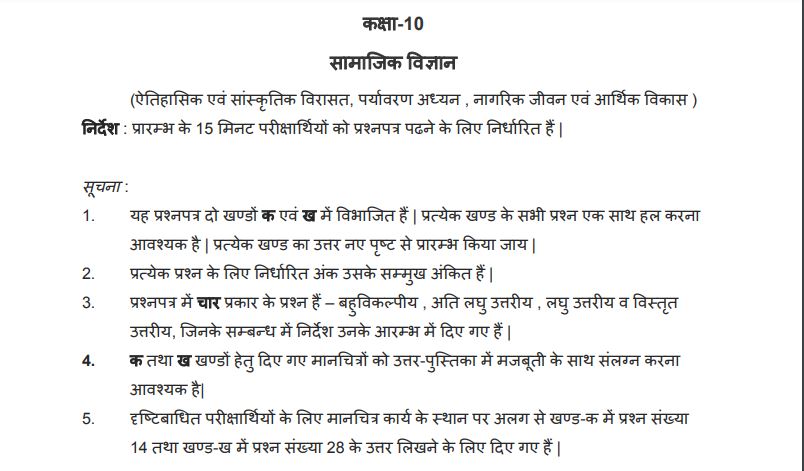Class 10th UP Board Sample essays in every topic. Sample papers are a type of study guide that will help you see how the question types will appear on the day of your next board test.
Given the size of the UP Board Class 10 component, it is critical that students adequately prepare for the test. These Sample Papers only highlight the most crucial questions while providing students with a thorough understanding of the format of the exam material.

Analysis of the Question Paper: UP Board 10th Hindi Paper 2020
Free Sample Papers for Class 10th Board
| Subject | UP Board Model Paper 2020 Class 10 |
| UP Board Model Paper 2020 Class 10 English | View/Download |
| UP Board Model Paper 2020 Class 10 Hindi | View/Download |
| UP Board Model Paper 2020 Class 10 Mathematics | View/Download |
| UP Board Model Paper 2020 Class 10 Science | View/Download |
| UP Board Model Paper 2020 Class 10 Social Science | View/Download |
Analysis of the Question Paper: UP Board 10th Hindi Paper 2020
Analysis of the UP Board 10th Hindi Paper 2020
| Section | Description |
|---|---|
| Aprambh | Focuses on grammar, vocabulary, and language usage. |
| Sahitya Kusum | Covers prose and poetry, including comprehension and analysis. |
| Vyangya Vichar | Tests understanding of literary devices and critical analysis. |
| Section | Weightage |
|---|---|
| Sahitya Kusum | Highest weightage |
| Aprambh | Second highest weightage |
| Vyangya Vichar | Moderate weightage |
| Question Type | Description |
|---|---|
| Multiple Choice Questions (MCQs) | Tests basic knowledge and understanding of the subject matter. |
| Short Answer Questions | Requires concise and relevant answers from students. |
| Long Answer Questions | Demands detailed and comprehensive responses, testing analytical and expressive abilities. |
| Aspect |
|---|
Key Topics Covered: UP Board 10th Hindi Paper 2020
UP Board 10th Hindi Syllabus Overview
Literary Works
The UP Board 10th Hindi syllabus includes a prescribed list of literary works, such as poems, short stories, and plays. It is essential to have a thorough understanding of these pieces, including:
- Themes
- Characters
- Plot
- Literary devices used by the authors
Key Aspects to Focus On
- Author’s Background and Literary Contributions: Understand the authors’ lives and their contributions to literature.
- Central Ideas and Messages: Analyze the main ideas and messages conveyed in each text.
- Character Analysis: Study the development and roles of characters within the works.
- Plot Structure: Learn about the structure of the plot and its significance to the narrative.
- Literary Devices: Identify and understand the literary devices used to enhance the text.
Grammar and Vocabulary
A strong foundation in grammar and vocabulary is crucial for success in the Hindi exam. Key areas to concentrate on include:
- Parts of Speech: Noun, pronoun, verb, adjective, adverb, etc.
- Tenses: Present, past, and future tenses.
- Sentence Structure: Simple, compound, and complex sentences.
- Direct and Indirect Speech: Practice converting between direct and indirect speech.
- Synonyms and Antonyms: Build your knowledge of words with similar and opposite meanings.
- Vocabulary Building Exercises: Engage in activities to expand your vocabulary.
Writing Skills and Composition
The Hindi paper often includes writing tasks that assess students’ ability to express themselves clearly and effectively. Key areas to focus on include:
- Essay Writing: Practice writing well-organized essays on various topics.
- Letter Writing: Work on both formal and informal letter writing.
- Paragraph Writing: Develop your ability to write clear and coherent paragraphs.
- Story Writing: Enhance your skill in crafting engaging and structured stories.
- Precis Writing: Learn to summarize texts concisely and accurately.
